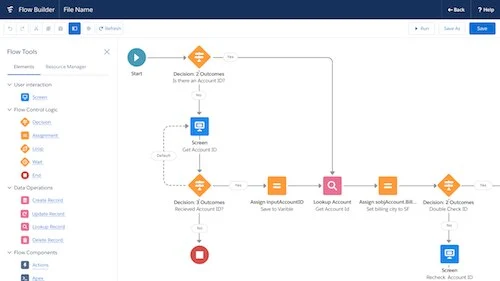In the realm of Salesforce, sandboxes serve as invaluable tools for development, testing, and deployment. They provide a safe and isolated environment for admins and developers to experiment without impacting the production environment. Understanding the nuances of Salesforce sandboxes, their best practices, and the myriad benefits they offer is essential for maximizing their potential within your organization.
The Importance of Sandboxes in Salesforce Development
Salesforce sandboxes play a pivotal role in the development lifecycle, offering a controlled space to build and test customizations, configurations, and integrations. Here’s why they are indispensable:
1. Isolated Testing Environment
Sandboxes mimic the production environment while keeping it separate from development activities. This isolation ensures that changes can be thoroughly tested without risking disruption to live operations.
2. Risk Mitigation
By providing a sandbox environment, Salesforce minimizes the risk associated with implementing new features or making changes to existing functionalities. Any issues or bugs can be identified and addressed before deployment to production.
3. Collaboration and Iteration
Sandboxes facilitate collaboration among development teams by allowing them to work on different aspects of a project concurrently. It enables iterative development processes, where changes can be continuously refined based on feedback and testing results.
Types of Salesforce Sandboxes
Salesforce offers several types of sandboxes, each catering to specific use cases and requirements:
1. Developer Sandbox
Ideal for individual developers or small teams, Developer Sandboxes provide a full copy of the production environment for coding and testing purposes.
2. Partial Copy Sandbox
Partial Copy Sandboxes contain a subset of production data along with metadata, allowing for realistic testing scenarios without exposing sensitive information.
3. Full Sandbox
Reserved for comprehensive testing and staging, Full Sandboxes mirror the entire production environment, including data and configurations. They are typically used for final testing before deploying changes to production.
Best Practices for Salesforce Sandbox Management
Effective management of Salesforce sandboxes is crucial for optimizing their utility and maintaining a streamlined development process. Here are some best practices to consider:
1. Regular Refreshes
Keep sandboxes up-to-date by scheduling regular refreshes from the production environment. This ensures that developers are working with the latest data and configurations, minimizing discrepancies during testing.
2. Usage Monitoring
Monitor sandbox usage to identify inactive or underutilized instances. Regularly review and adjust allocations to optimize resource utilization and reduce costs.
3. Version Control
Implement robust version control practices to track changes and updates across sandboxes. This enables better collaboration, rollback capabilities, and ensures consistency across environments.
Benefits of Salesforce Sandboxes
The advantages of leveraging Salesforce sandboxes extend across various aspects of the development and deployment process:
1. Enhanced Quality Assurance
By providing a dedicated testing environment, sandboxes enable thorough quality assurance processes, resulting in higher-quality deliverables and reduced post-deployment issues.
2. Accelerated Development Cycles
Sandboxes facilitate agile development methodologies by allowing for parallel development and testing activities. This accelerates the pace of innovation and enables faster time-to-market for new features and enhancements.
3. Improved Collaboration and Innovation
With sandboxes, development teams can collaborate more effectively, leading to innovative solutions and seamless integration of new functionalities into the Salesforce ecosystem.
Conclusion
Salesforce sandboxes are indispensable tools for organizations looking to maximize the potential of the Salesforce platform. By providing a safe and controlled environment for development, testing, and collaboration, they enable faster innovation, higher-quality deliverables, and reduced risks during deployment.
Mastering Automated File Copy Between Salesforce Object Records




